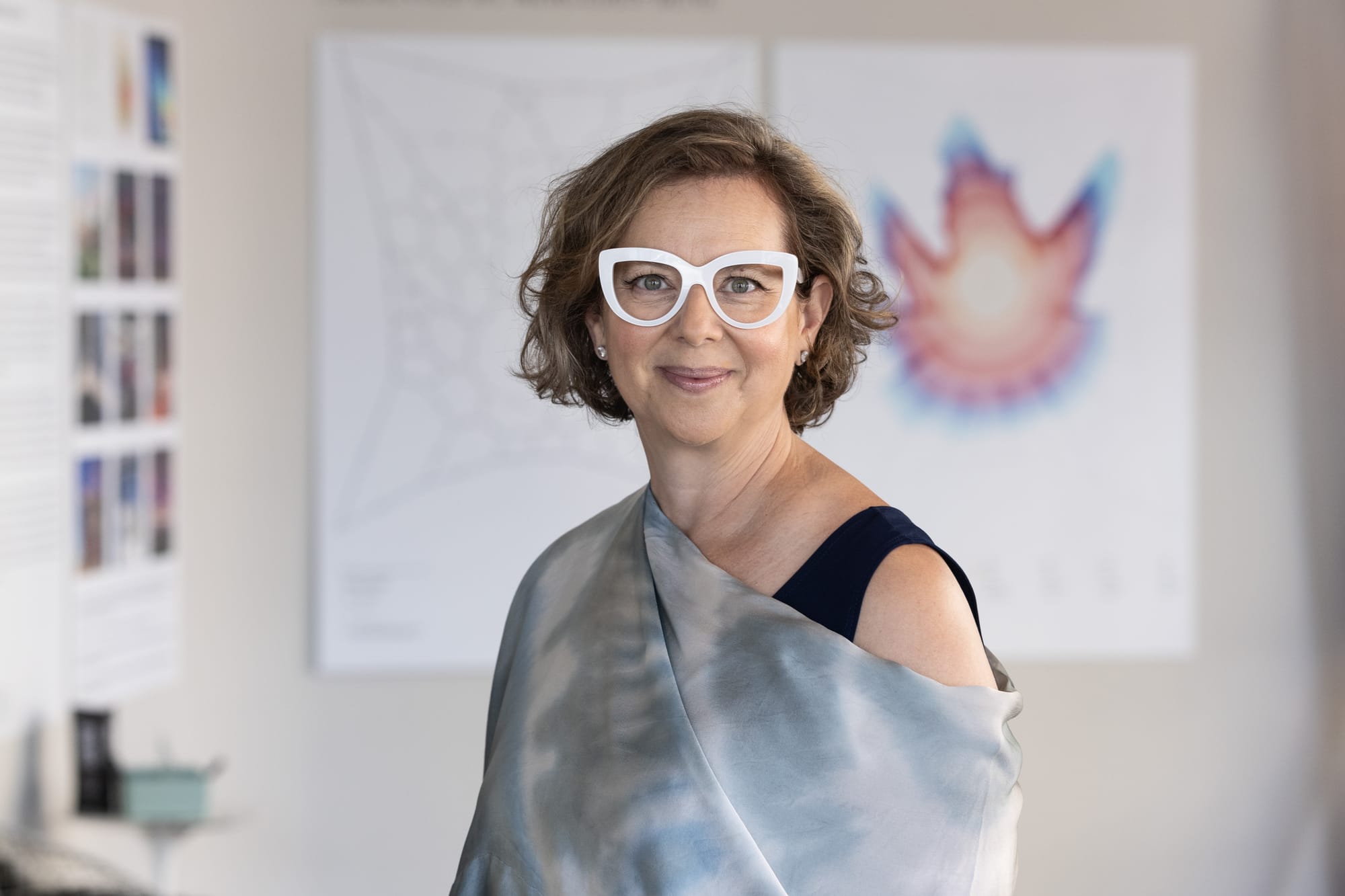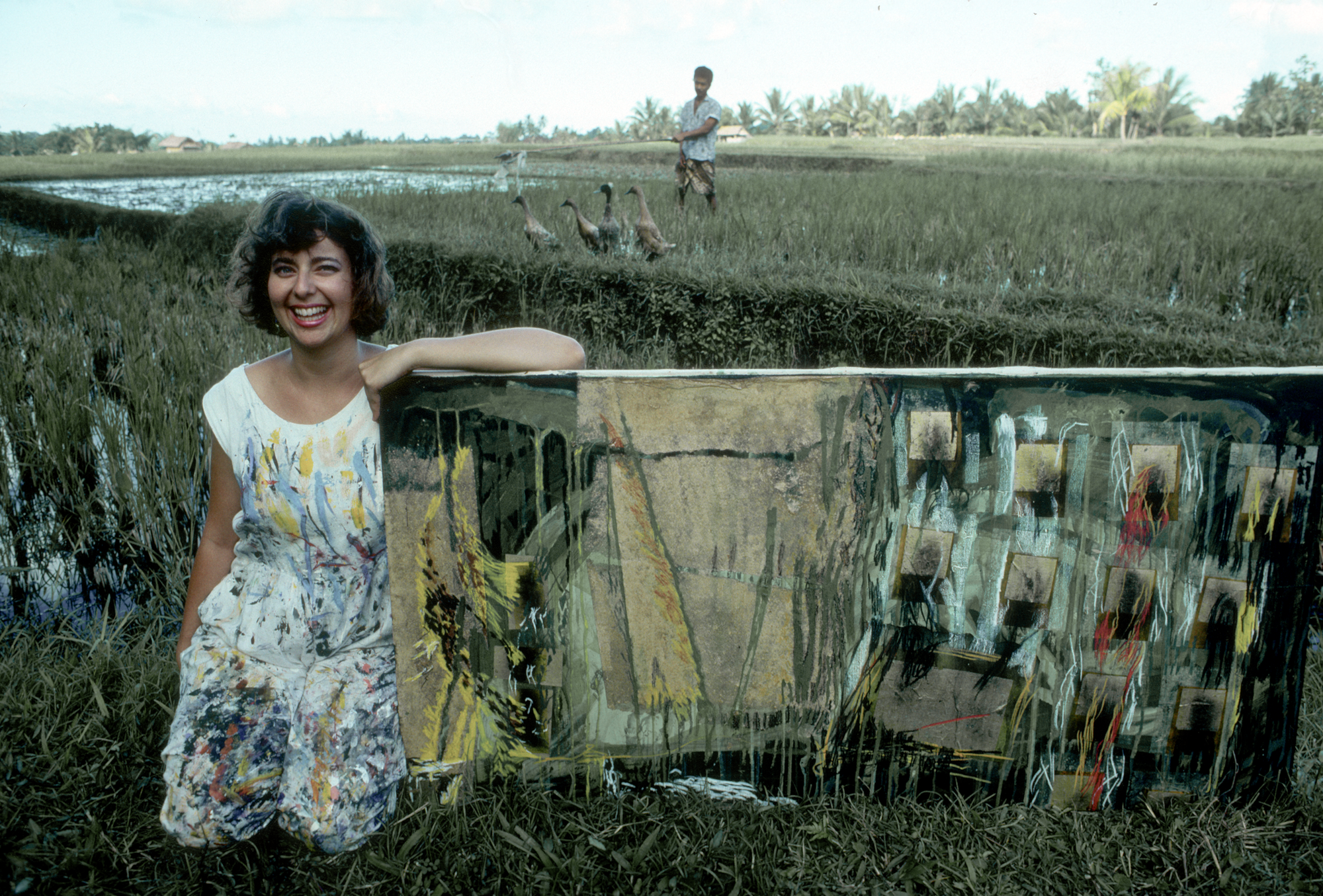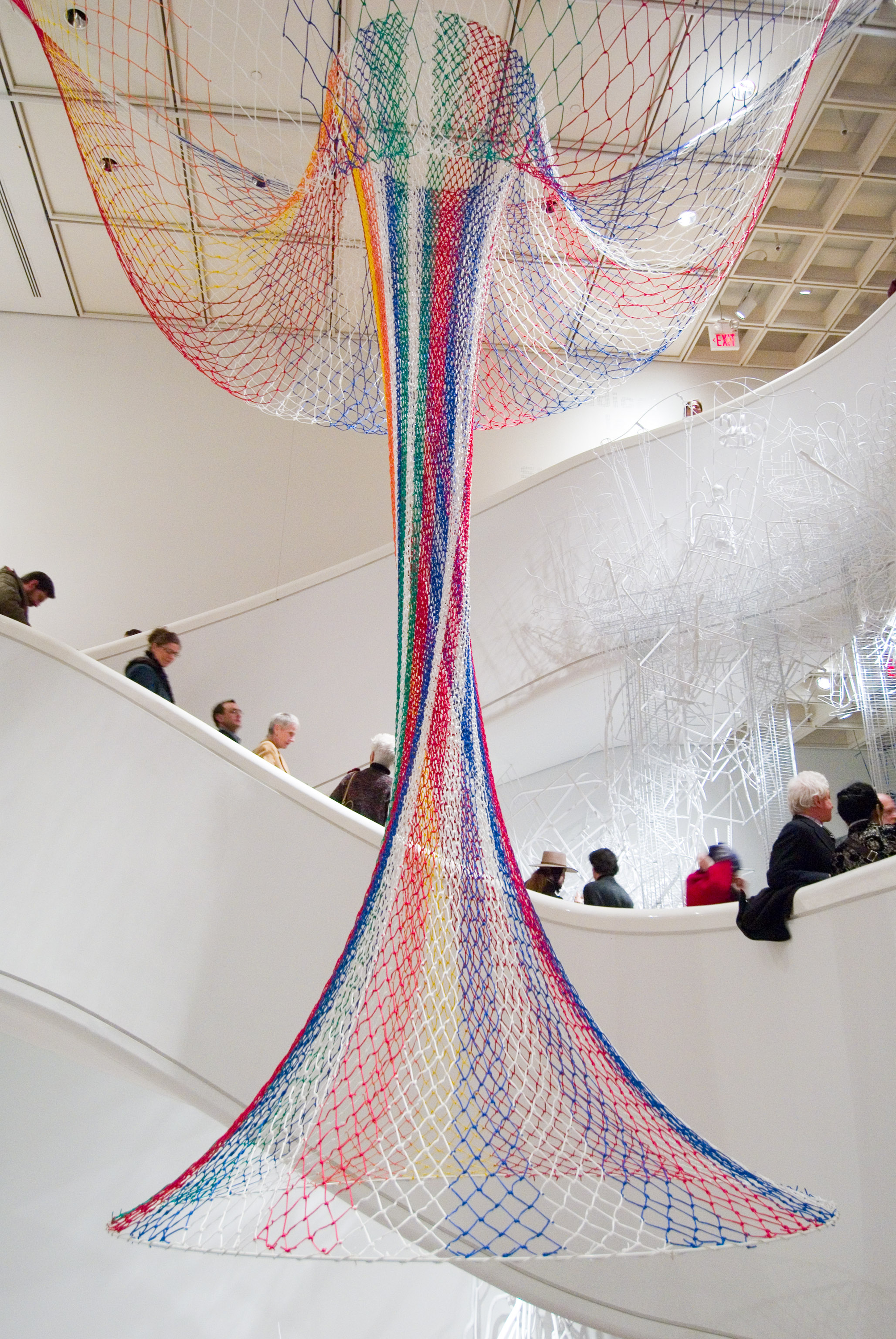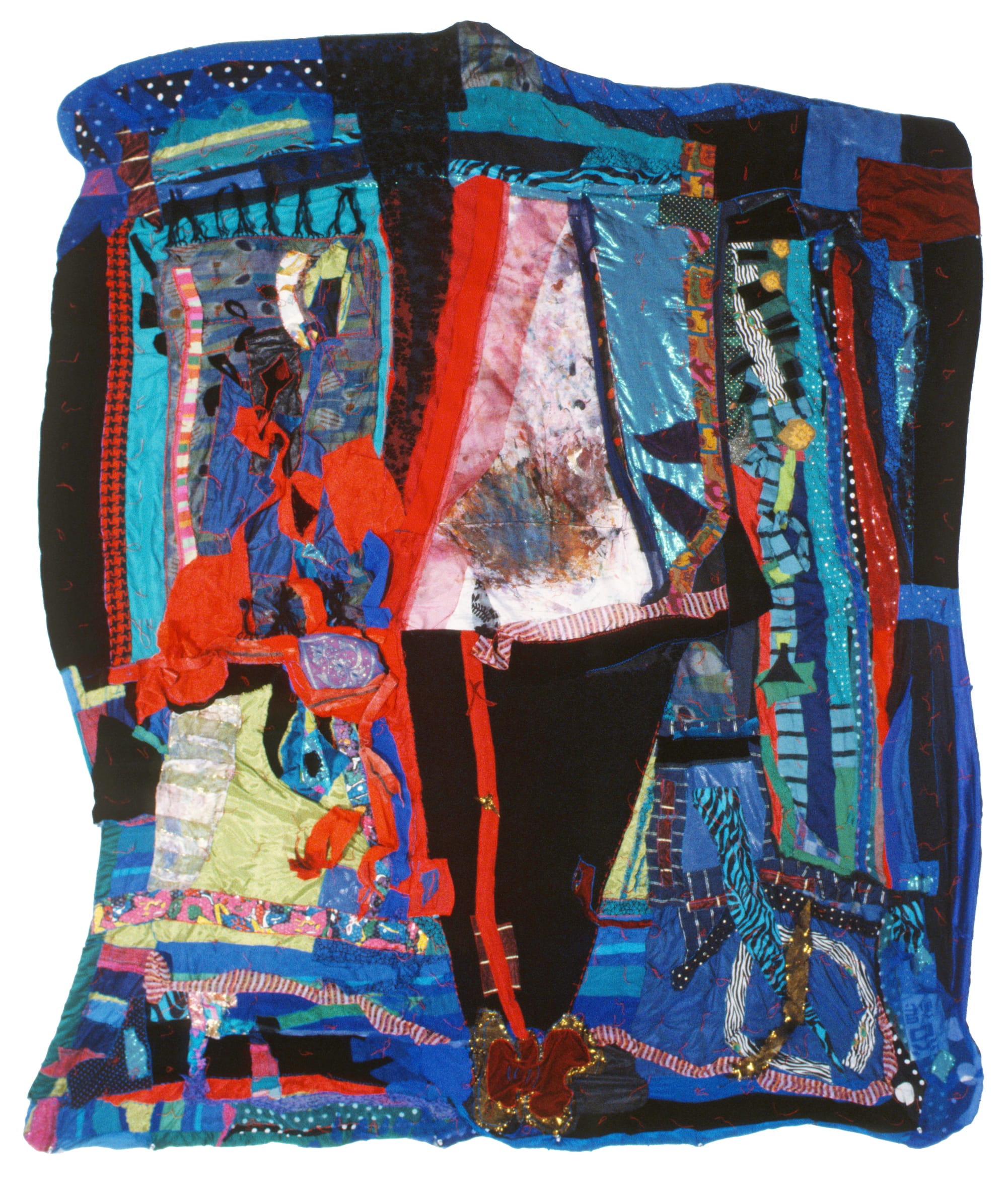
Florida-born artist Janet Echelman has transformed contemporary sculpture through digital modeling, a process that uses data to design her monumental woven nets. Her work is now the focus of a mid-career survey in Florida.
The exhibition, “Janet Echelman: Radical Softness,” opens November 16 at the Sarasota Art Museum of Ringling College of Art and Design and runs through April 26, 2026. It examines how Echelman combines engineered fibers, digital modeling and environmental data to create woven sculptures that move with wind and light.
Three of her best-known large-scale works have been adjusted to the museum’s space and anchor the show, which traces Echelman’s move from painting to experiments with fishing nets to the data-modeled installations that now hover over cities around the world.
Curator Lacie Barbour said the exhibition focuses on how Echelman treats “softness as a strength” while celebrating her innovations in design technology. She noted that the presentation aligns with the museum’s emphasis on art-and-technology learning for Ringling College students.
“I also think the concepts behind Echelman's works are really timely. A lot of her practice deals with environmental concerns and humanity's connection to the climate. And I think that's an important conversation to have right now,” Barbour said.

The exhibition is also a bit of a homecoming for Echelman, who was one of the institution’s first visiting artists before it was an established museum.
Before she became known for floating netted forms, Echelman graduated from Harvard University with a degree in Visual & Environmental Studies, then spent time in Hong Kong and Bali. In India, she encountered fishing nets and started her sculptural experiments.
Eventually, she started looking for sturdier ways to make larger works, which Barbour described as “really tricky to do without any computer technology.” But, at the time, there weren't programs fast, reliable or accurate enough to conceptualize her sculptures.
So, in 1999, Echelman founded her studio in New York City with her late husband, computer scientist David Feldman—a collaboration that led to innovations in software and 3D digital modeling.

Together, they developed the tool JNet, which helped to render Echelman’s designs in a 3D software program. Echelman’s studio now uses a custom Maya-based tool—developed with Autodesk and informed by JNet—to model soft-body, wind-responsive net forms.
“This program is really advanced,” Barbour said. “It allows her to take her sketches, start the design process in the software, and then go in and select every single color of thread and place that into the 3D model. And it allows her to place the work kind of in situ, what it would look like in between buildings in a specific landscape.”
With the tool, Echelman can simulate the wind blowing through it and see how that affects the sculpture in the form, Barbour said. And she can also simulate how natural disasters might affect them and find weaknesses in their engineering.
“It has been so integral in her practice in making these large-scale sculptures, because she's working with city planners and engineers, and they have to have a very good idea of how this thing is going to exist in a space and how it will hold up over time,” Barbour said.

But while Echelman’s work is assisted through computer modeling, it’s intimately hands-on. “I think that's a really interesting aspect of her work,” Barbour said. “The artistry is not lost in all of this computation. The craft is still there.”
As for how the museum intends to display her works, Barbour said many of Echelman’s works are monumental and span hundreds of feet. But the museum’s largest display area is a 30-foot-tall gallery space called the Koski Gallery which cannot accommodate that size. So, the new show will use some of her studies and maquettes.
In the Koski Gallery will hang a 25-foot-wide netted sculpture, Expanding Club (2007), which evokes a nuclear mushroom cloud, contrasting ancient knotting with modern weaponry.
“Because the sculptures themselves are 400 feet long, at times, the maquettes and the studies are maybe like a ninth scale of that. So, they're still really massive sculptures,” she said. “And so, we're able to accommodate three of those really large-scale sculptures.”
The exhibition opens with Echelman’s earliest paintings and drawings from 1989, tracing her evolution from traditional techniques she studied in Bali and India—such as batik and textile dyeing—toward mixed-media works that blur painting and fabric. These early experiments reveal how her interest in color, translucency, and material texture would eventually carry into her sculptural practice.
Video installations throughout the galleries capture how Echelman’s large outdoor sculptures shift with wind and light, despite being made from high-tech fibers up to 15 times stronger than steel. The videos allow visitors to see the scale, movement and interaction her works create in public spaces—elements that can’t be replicated indoors.
“The video works show people interacting with them, climbing on them, dancing in them. Our visitors are not allowed to touch the works, so they won't be moving in the gallery space. But the videos are a testament to how fluid yet durable they are,” Barbour said. “That is really at the center of this exhibition: how she is harnessing this softness as a strength.”

One of the newest works in the show, Remembering the Future, translates climate data into sculptural form, reflecting Echelman’s ongoing interest in the environment and humanity’s adaptability.
The exhibition also debuts cyanotype prints made from her digital models and quilts stitched from her late husband’s clothing—works that translate her monumental practice into intimate, personal forms.
“That is a very rare opportunity for visitors, because usually they're high above people's heads. They don't get to see all of the details. Here, they're at eye level and below, sinking to the floor and soaring up to the ceiling,” Barbour said.
“And so, you get a sense of their kind of grandiosity, but you also get a little bit of a reveal into the sort of engineering and the materials that she uses. It’s a little peek behind the curtain. It doesn't reveal all of the kind of magic behind the scenes, but I think it gives people a very unique chance to view her work.”
